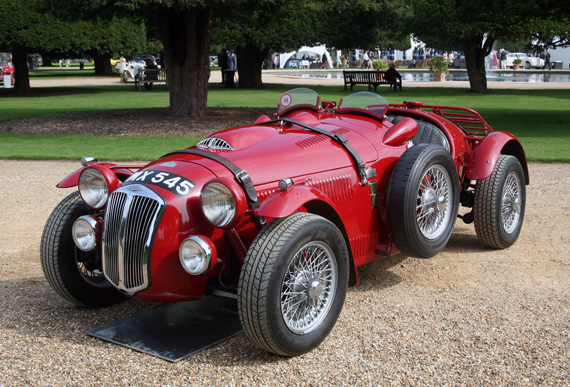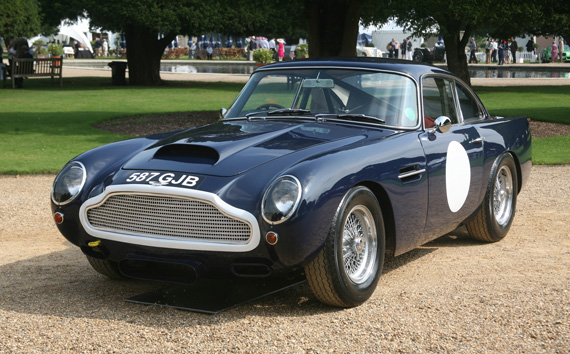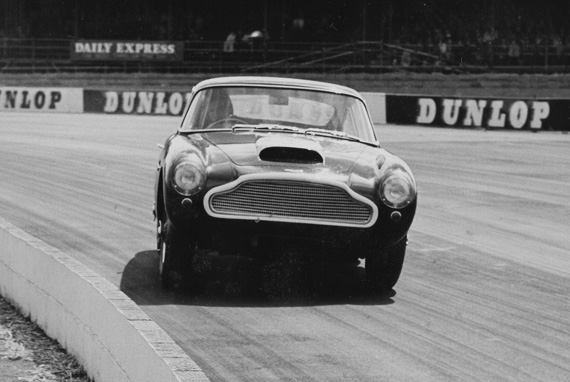Story by Graham Gauld
Perhaps the title d’Elegance does not hit an exciting cord: static cars, polished, primped and lined up but there are some of them that are fascinating not only because of the quality of the cars but of the variety. Obviously classics like Pebble Beach and Villa D’Este come to mind but it is time to add a third one, the Concours of Elegance, held at London’s Hampton Court Palace a week ago. (Note the British use of the word “of” rather than the French “de”.)
This one is the third of a series that is unique as they have all been granted permission by the Queen of England to have the cars placed on the lawns and in the gardens of Britain’s royal palaces. The first was held in the gardens of her Majesty the Queen’s Windsor Castle, the second, last year, at Kensington Palace in London and now Hampton Court Palace, the home of the legendary King Henry VIII and his wives. This new event has now established itself as something very special and as a result cars from all over the world arrived for the event. And what cars they were.
As usual I was sniffing around looking for cars with interesting histories, or ones I had seen before and there was an impressive collection of race cars.
The first that caught my eye was a Frazer Nash High Speed model, not just because it was the precursor of the famous Le Mans Replica model – the only new car model to be called a replica from the beginning – but it was the actual car that led to the renaming.
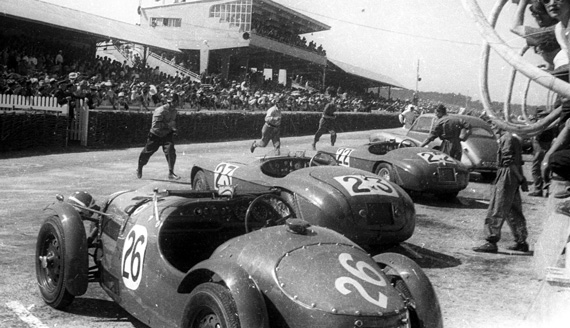
This historic photograph of the start of the 1949 Le Mans race from Lord Selsdon's archives shows three interesting cars. In the foreground is the High Speed Frazer Nash that finished third overall. Next to it is Ferrari 166MM (26) driven by Jean Lucas ( Chassis 0010M) that retired in the race but was also at Hampton Court and car 22, the Ferrari 166MM (Chassis 0008M) of Chinetti and Selsdon that was to win Le Mans that year.
It was the third of the Frazer Nash High Speed models that had been created in 1949 and this one not only ran in the first post-war Le Mans 24 hour race but surprisingly finished third overall. It made the headlines and so when Frazer Nash decided to clean it up a bit and offer it for sale as a new model just over a year later they called it the Le Mans Replica. It was only beaten in the 2 liter class at Le Mans by the winning car, the Ferrari 166M driven by Luigi Chinetti and Lord Selsdon. The Le Mans Rep, as it was always called went on to have a distinguished racing career including Franco Cortese winning the 1951 Targa Florio, but it was also a difficult car that was prone to roll. Roy Salvadori suffered such a fate and was almost killed at Silverstone in one and I personally lost two Scottish club racing driver friends in accidents when they rolled their Le Mans Reps, but it was still a great car.
Standing close by was another car from the 1949 Le Mans 24 hour race, the Ferrari 166MM (Chassis 0008M) that was driven in the race by Frenchmen Jean Lucas and Rene Dreyfus but it retired on that occasion. This car had already won the 1949 Spa 24 hours with Lucas and Luigi Chinetti but according to Lord Selsdon’s son, the present Lord Selsdon, it was his father who actually owned the car. His father also owned 0008M, the Le Mans winner that was shared with Luigi Chinetti. Now at Hampton Court Palace noted collector Jon Shirley had brought the Spa winning car and as can be seen from the unique photo from Lord Selsdon’s archives, the Nash and the two Ferraris are actually shown in the same picture at the same race.
Yet another interesting car, the lightweight Aston Martin DBGT bought by Tommy Sopwith for his Equipe Endeavour to race against the Ferrari SWBs. Tommy’s father was famous as the builder of the legendary WW1 fighter plane, the Sopwith Camel. Sopwith had many successes with it particularly when driven by the exuberant Jack Sears. Though heavier than the Ferrari it handled well but the Ferrari always had a touch more charisma and it was great to see it again. It is now owned by Paul Michaels whose former company Hexagon of Highgate used to run a Brabham in Formula 1.
I have always thought the Ferrari 250GT SWB was a true classic and perhaps even marginally better than the GTO – after which statement I will probably be hung drawn and quartered by the Ferrari enthusiasts – and there was an interesting one at Hampton Court. It was Chassis 2807GT a car that had been sold new to French racing driver Roger de Langeneste fundamentally for rallies and hill climbs. What made it interesting was that it was one of the later models that is called in America the SEFAC “Hot Rod” berlinetta. There were only 20 of these cars made in 1961 and this was the thirteenth one built and only the third one with wind-up windows. (Necessary if you are going to rally such a car as the co-driver needs to be able to hand over the route book).
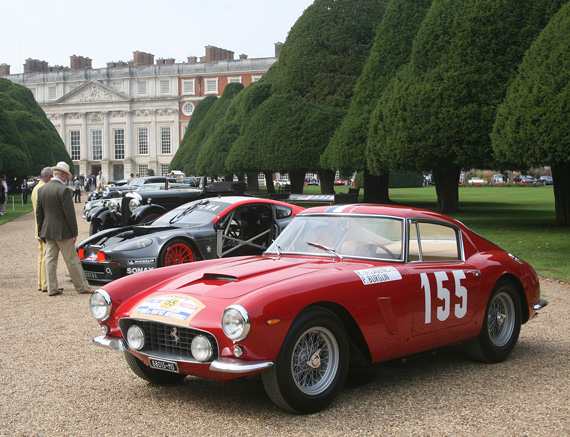
The Ferrari 250GT SWB (Chassis 2807GT) originally bought by French racing driver Roger de Langeneste in the foreground with the impressive Hampton Court Palace in the background. Alongside the Ferrari is the racing Aston Martin DB9.
The key to these SEFAC models was the engine the 168/61 which took the basics of the 1960 SWB engine but now fitted with the 1960 Ferrari Testa Rossa big valve cylinder head augmented by three big Weber 46DCF/3 carburettors from the 375MM sports racing cars. Scaglietti produced the aluminum bodywork and so the 1961 SWB was a formidable tool to work with. The car at Hampton Court was run in the 1962 Targa Florio by de Langeneste and fellow Frenchman Jean Rolland and finished 5th overall behind the factory GTO of Giorgio Scarlatti. It was later sold into Sweden where it was well placed in a number of events and now here it was looking resplendent at Hampton Court.
There were many more cars of interest there and I will be returning to some of them as they had links with some other interesting stories but let’s wait a week or two before doing that. Meanwhile, for me this was a Concours that was truly elegant in a right royal setting.
